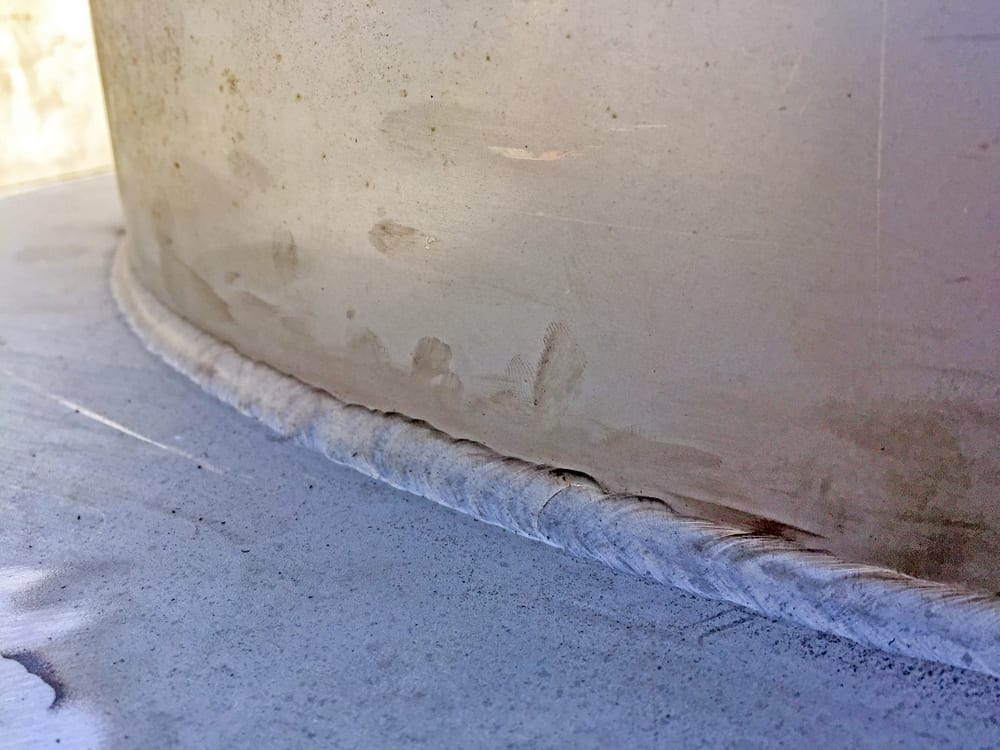
Heat is a complicated subject in welding. If the heat is too low, you will face problems achieving the required penetration. On the other hand, with high heat, you will have issues like cracking, spattering, and undercutting.
Undercut in welding (or welding undercut) is a commonly observed defect—especially when welding thick or thin workpieces and dissimilar metals. Precision heat control is the most effective way to deal with this issue, although factors such as metal preparation and gas flow also play an essential role. These solutions can be effectively implemented through orbital welding to achieve a weld free of flaws.
Welding Undercut: What Is It and Why Is It Dangerous?
The American Welding Society (AWS) defines an undercut as “A groove in the base metal along both sides of the weld that is not completely filled during the welding process.” The groove appears when:
- The welder melts too much of the base metal
- The weld puddles fuse to the unmelted metal
The undercut creates an area of depression in the base metal along the edges of the joint, causing the formation of grooves. Based on the location of the defect, welding undercuts are of two types—internal and external.
| Internal Undercut | Forms near the root of the weld jointAppears as a groove or depression on the sidewall |
| External Undercut | Forms near the crown or top of the weld jointAppears as an irregular dark line on the surface of the weld bead |
What Causes Welding Undercut?
Many factors contribute to the formation of these types of welding undercuts. These include:
| Heat Input | Due to excess heat input (or slow travel speed), the base metal can melt excessively, creating a groove. These grooves indicate the erosion of the metal near the weld. This can lead to weakening and premature failure of the weld. |
| Electrode | Using an incorrect electrode size means excess heat is being used, which may melt the base metal. Welding at an incorrect angle may cause grooves to form along the base of the weld. This can lead to improper fusion with the base metal and undercutting. |
| Joint preparation | A standard surface cleaning procedure, beveling, fit-up, etc., is required for all welding applications. When the surfaces are uneven and contain inclusions, the flow of the weld pool is disrupted. The attempt to fill in the weld gaps can lead to developing undercutting defects. |
Avoid Welding Undercut With Orbital Welding
To reduce welding undercut, weld operators should use proper welding processes along with ensuring the accuracy of the welding parameters and preparation of the joint. The mechanized orbital welding process is highly precise, allowing control of the welded parameters required to reduce defects. Here are a few ways orbital welding helps reduce the chances of welding undercut.
- Precision control: Orbital welding facilitates the control of weld parameters such as the current, voltage, gas flow rate, and travel speed—the factors that are important to heat control.
- Programmability: Apart from the heat input parameters, the orbital welding system can be programmed to maintain an ideal distance between the electrode and the weld metal. Additionally, the angle of the electrode and its movement can be controlled to avoid irregularities in welding that result in undercutting.
- Monitoring: Orbital welding enables real-time monitoring and feedback, which means any defect in the weld, including undercutting, can be immediately identified and remedied. The remedies may include adjustment to joint preparation, weld parameters, or filling up as required for the extent of the defect.
- Specialized equipment: Orbital welding uses specialized weld heads when welding workpieces such as pipes or tubes. These weld heads facilitate holding the metal in place, ensuring proper fit-up. The continuous and uniform movement of the weld head eliminates the risk of irregularity in heat input to avoid welding undercut.
Avoid Welding Undercut With Control and Consistency
Through highly effective orbital welding, your weld process will benefit from consistency and control of weld parameters. The even distribution of heat input reduces the risk of irregular heating and the formation of grooves on the weld area. For single or multipass welding, orbital welding improves the quality and load-bearing strength of the weld joint by reducing the chances of welding undercut. Less defect means reduced cost and time of repair—leading to optimized productivity.
Arc Machines, Inc is a leading provider of orbital welding solutions, including weld heads and power supplies. Our high-quality equipment can help you achieve the precision and control required by your welding application to reduce defects such as welding undercuts. For inquiries regarding products, contact sales@arcmachines.com. For service inquiries, contact service@arcmachines.com. To develop a custom solution, contact us to arrange a meeting.




